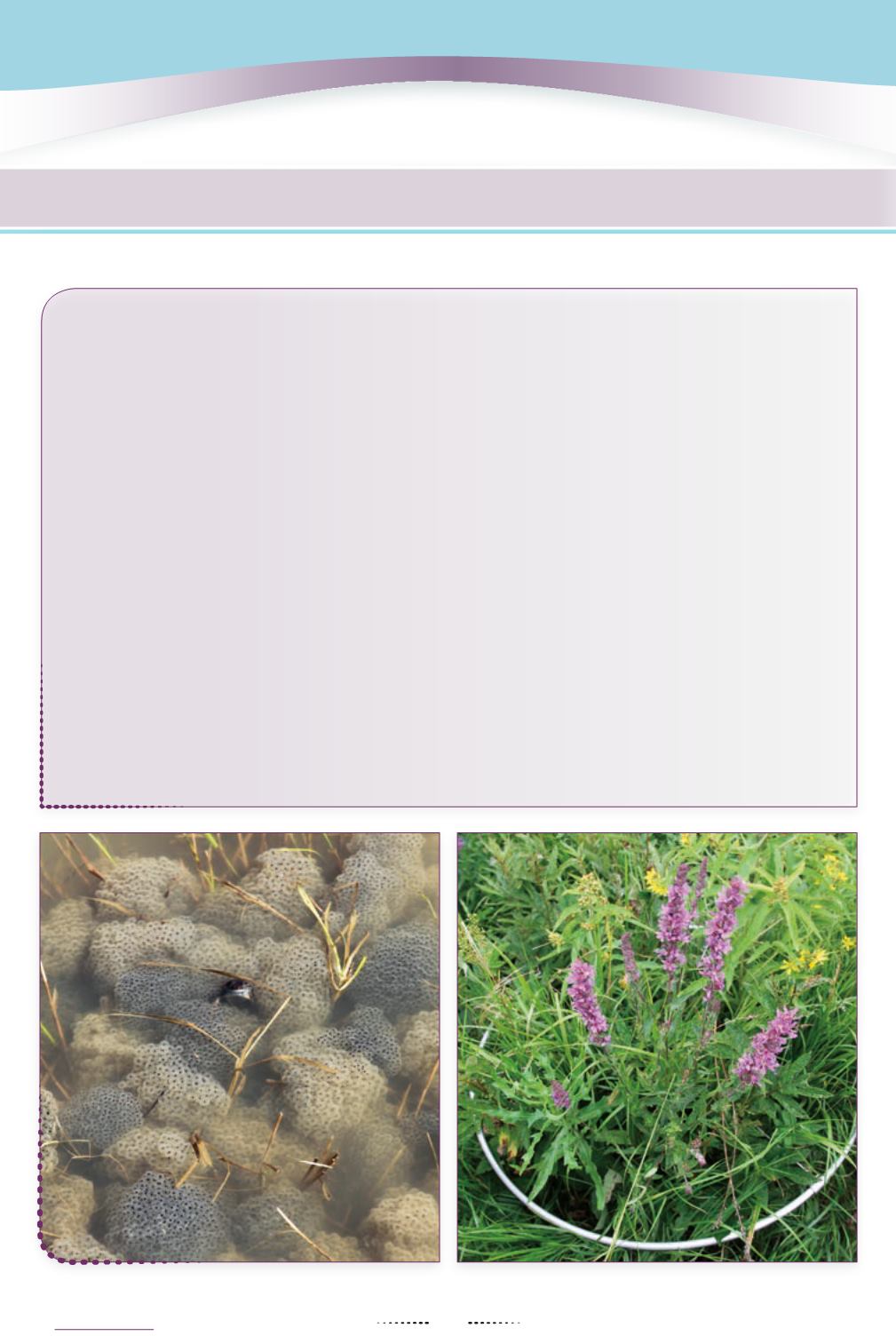
80
M
ain
impacts
&
benefits
Several parameters have been
monitored
in water at the wetland inflow and outflow since implementation: continuous flow
and water level, nutrients, conductivity, temperature, pH, oxygen, hydrocarbons,metals, bacteria. In addition to assessing impacts
on water quality and quantity, the impact of the wetland on carbon cycling and greenhouse gases has been monitored.
Vegetation and fauna have been observed in order to assess the establishment of critical habitats in urban settings. Evaluation
of ecosystem services has included interviewing local residents about their perception of the created parks.
Based on continuous (sampling at 10 minute interval) water monitoring, water quality improvements have been observed,
including a 10% reduction in phosphorus (P) concentration on an annual basis, which is contributing to
decreasing the
risk of eutrophication
in Lake Enäjärvi. The wetland retains P comparatively most efficiently during the growing season
in July, although P retention was highest in terms of absolute quantity during the rainy season in October and November.
The highest-event based reduction of total phosphorus observed was 71%, during a late growing season rain event in 2013.
Peakflow rate
has decreased by 40% compared to the previous state (before the implementation of the measure).
The measure has also had positive impacts on
biodiversity
. The wetlands were constructed by excavation in abandoned
crop fields, and vegetation was allowed to self-establish. Seven vegetation zones have been identified at the Gateway wetland:
natural flood meadow by the lake; constructed islands; constructed wetland area; two drier wet meadow areas; area of Salix
shrubs, and adjacent forest edge.Annual monitoring for species and foliar coverage in summers of 2010-2014 (94 plots of 0.5
m
2
each) revealed that self-establishment of vegetation in the Gateway wetland has been rapid, rich in taxa, and dominated
by
nativewetland species
. Only two alien species were identified: Elodea canadensis in deep water areas and Epilobium
adenocaulon in drier meadow areas. The number of herbaceous species reached 102 in the fifth growing season in 2014.
Greenhouse gases
(GHG) have been continuously monitored at the Gateway wetland by the eddy covariance method from
air (measures fluxes) and directly from water (measures concentrations). Measurements of GHG concentrations in water during
winter 2012-2013 indicate that the site has been a source of CO
2
and CH
4
into the atmosphere. However, ice cover has
prevented GHG emissions in winter. The GHG concentrations in water were sensitive to changes in flow rates.
Extra vegetation establishment was observed with 0,5 m
2
plots
Frog heaven
© O.Wahlroos, University Helsinki (Dpt. Forest Sciences)
© O.Wahlroos, University Helsinki (Dpt. Forest Sciences)


